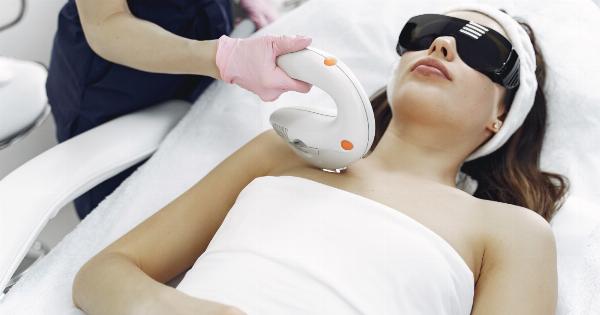Title: Eliminate Hemorrhoid Growth with Laser Technology
Hemorrhoids are a common condition that affects millions of people worldwide. Also known as piles, hemorrhoids are swollen blood vessels in the anus and rectum, causing discomfort, pain, and sometimes bleeding.
While there are various treatment options available, the introduction of laser technology has revolutionized the way hemorrhoids are treated. This article explores how laser technology is being used to eliminate hemorrhoid growth and provides insights into its benefits and effectiveness.
Understanding Hemorrhoids
Before delving into laser technology, it is important to have a basic understanding of hemorrhoids. Hemorrhoids can be classified into two types: internal and external.
Internal hemorrhoids occur inside the rectum, whereas external hemorrhoids develop outside the anus. The primary causes of hemorrhoids include straining during bowel movements, prolonged sitting or standing, obesity, and pregnancy.
Conventional Treatment Options
In the past, conventional treatment options for hemorrhoids involved conservative measures, such as over-the-counter creams, ointments, and lifestyle modifications.
However, in more severe cases, surgical interventions including rubber band ligation, sclerotherapy, and hemorrhoidectomy were required.
The Advent of Laser Technology
Laser technology has significantly transformed the way medical conditions are treated, including hemorrhoids. Laser treatment for hemorrhoids involves the usage of a focused beam of light to remove or shrink the swollen blood vessels.
This advanced technology has gained popularity due to its minimally invasive nature, enhanced precision, and reduced discomfort and recovery time.
The Procedure: Laser Hemorrhoidectomy
During a laser hemorrhoidectomy, a surgeon utilizes a laser beam to cut off the blood supply to the inflamed hemorrhoidal tissue, causing it to shrink.
This procedure is performed under local anesthesia and offers several advantages over conventional surgical methods. The laser technology allows for more accurate and precise removal of hemorrhoids, reducing the risk of complications and minimizing post-operative pain.
Benefits of Laser Hemorrhoid Removal
Laser technology offers numerous benefits when it comes to eliminating hemorrhoid growth:.
1. Minimally Invasive
Laser hemorrhoid removal is considered a minimally invasive procedure as it requires only small incisions or none at all. This reduces the risk of infection, bleeding, and scarring compared to traditional surgical methods.
2. Precise and Controlled
The laser allows surgeons to have better control and precision during the procedure, resulting in the precise removal of hemorrhoids without damaging surrounding healthy tissues.
3. Reduced Pain and Discomfort
Laser hemorrhoidectomy typically involves less pain and discomfort compared to traditional hemorrhoid surgeries. The laser cauterizes the blood vessels as it removes the hemorrhoids, resulting in reduced bleeding and post-operative pain.
4. Faster Recovery Time
Due to its minimally invasive nature, laser hemorrhoid removal generally offers a quicker recovery time compared to conventional surgical methods. Patients can expect to return to their normal activities sooner.
5. Lower Risk of Complications
With laser technology, the risk of complications such as infection, urinary retention, and anal stenosis is significantly reduced. The procedure is more precise and less invasive, minimizing potential risks.
Effectiveness of Laser Hemorrhoid Removal
The effectiveness of laser hemorrhoid removal can vary based on the severity of the condition and individual factors. However, studies have shown promising results.
A study published in the journal Surgical Endoscopy found that laser hemorrhoidectomy provided long-term relief in 90% of the patients included in the study.
Moreover, laser technology has been proven to be effective in treating both internal and external hemorrhoids. It can effectively remove or shrink the hemorrhoidal tissue, relieving the associated symptoms.
Recovery Process
Following laser hemorrhoid removal, the recovery process is generally smoother compared to traditional surgical methods. Patients may experience mild discomfort, pain, or bleeding during the first few days.
However, this is usually manageable with pain medication and proper post-operative care.
It is important to maintain good hygiene and follow the surgeon’s instructions for a speedy recovery. Stool softeners and a high-fiber diet are often recommended to prevent constipation and reduce straining during bowel movements.
Prevention of Hemorrhoids
While laser technology offers an effective solution for eliminating hemorrhoid growth, prevention is always better than cure. Here are some tips to help prevent hemorrhoids:.
1. Maintain a High-Fiber Diet
A diet rich in fiber can help regulate bowel movements and prevent constipation, which is a major contributing factor to hemorrhoid development. Include plenty of fruits, vegetables, whole grains, and legumes in your diet.
2. Stay Hydrated
Drinking an adequate amount of water throughout the day helps keep stools soft and easy to pass. Aim to drink at least eight glasses of water daily.
3. Avoid Straining
Straining during bowel movements puts unnecessary pressure on the rectal area. If you are experiencing difficulty passing stools, consider making dietary changes or using stool softeners to ease the process.
4. Exercise Regularly
Engaging in regular physical activity helps improve bowel function and prevents the stagnation of blood in the anal area. Incorporate exercises such as walking, swimming, or cycling into your routine.
5. Practice Good Hygiene
Avoid excessive wiping after bowel movements and gently clean the anal area with water or unscented wet wipes. Harsh wiping can irritate the hemorrhoids and worsen the condition.
The Future of Hemorrhoid Treatment
Laser technology has undoubtedly revolutionized the treatment of hemorrhoids. However, medical advancements continue to pave the way for even more innovative and effective solutions.
Researchers are exploring new techniques, such as infrared coagulation and radiofrequency ablation, to further enhance treatment options and reduce the need for surgical interventions.
Conclusion
Laser technology has brought a ray of hope to those suffering from hemorrhoids, offering a minimally invasive and effective treatment option.
Laser hemorrhoid removal provides numerous benefits, including reduced pain, faster recovery, and a lower risk of complications. However, prevention remains crucial, and adopting a healthy lifestyle can significantly reduce the chances of developing hemorrhoids.
With ongoing advancements, the future of hemorrhoid treatment looks promising, promising improved outcomes and greater patient comfort.






























